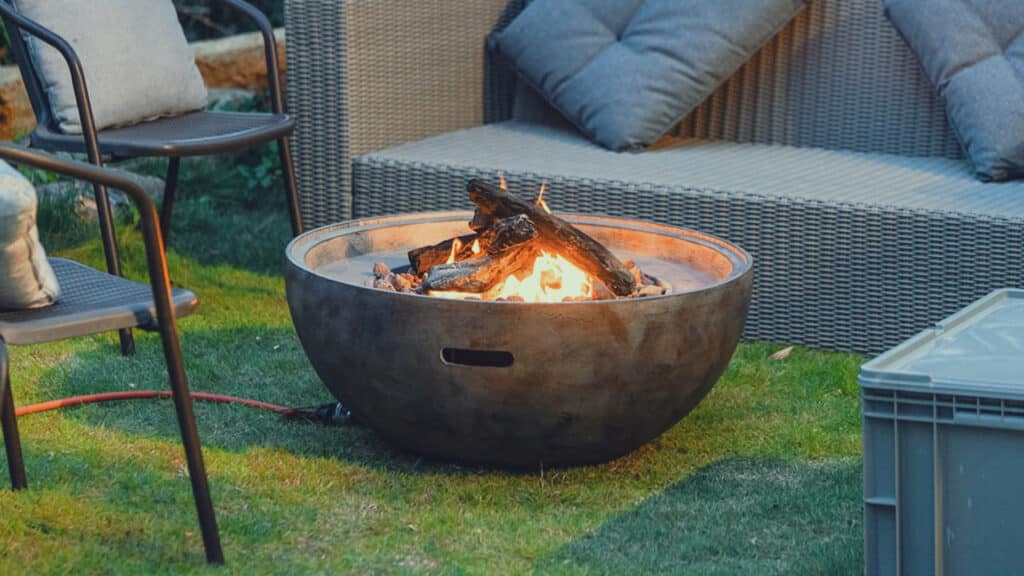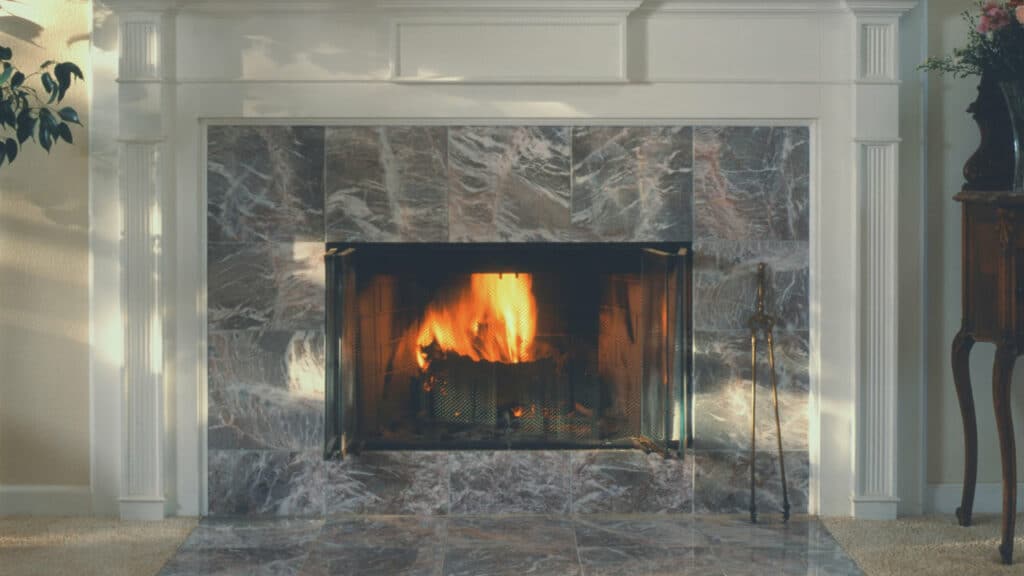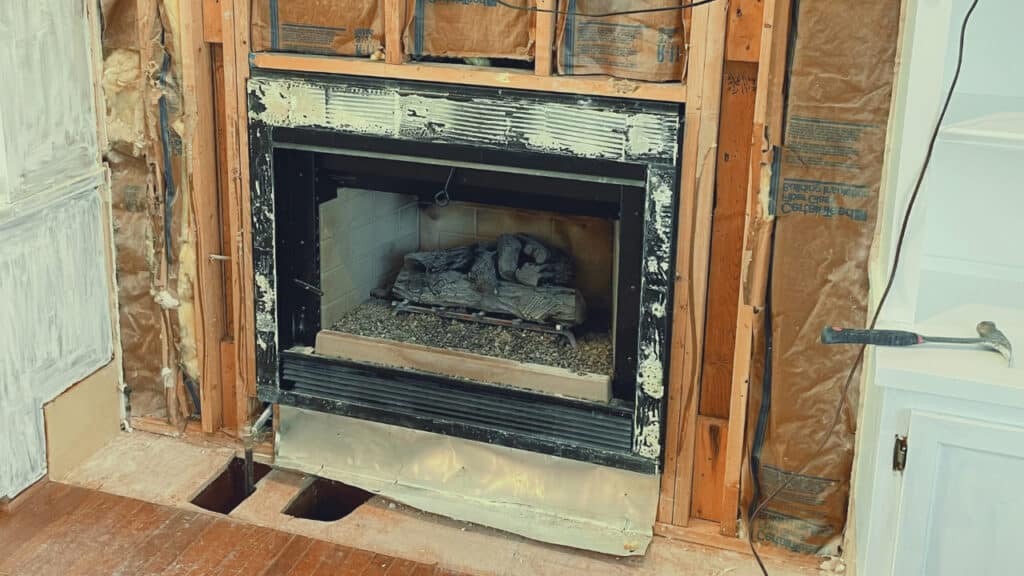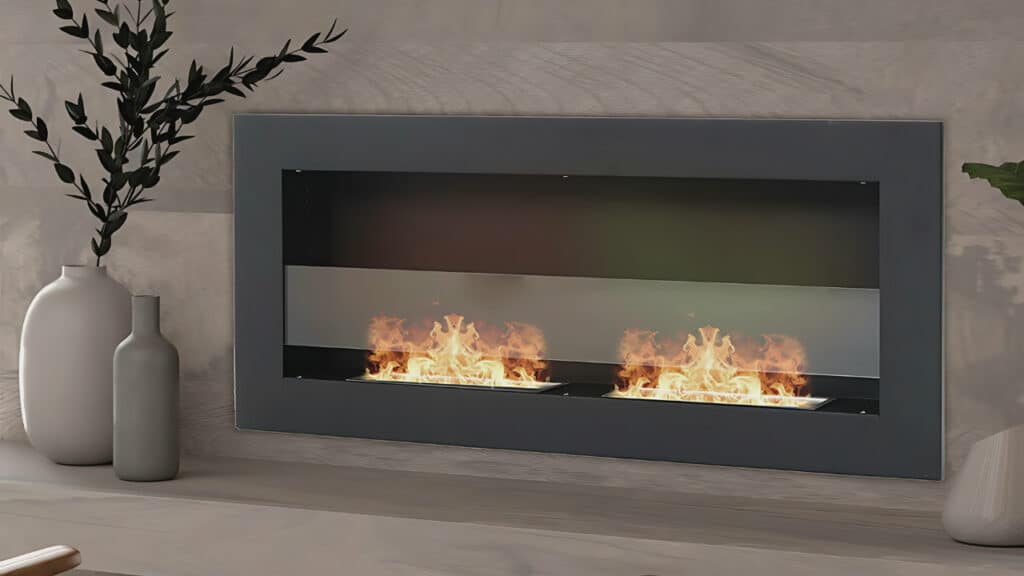Fireplaces, crackling with warmth and casting dancing shadows, are more than just heating sources – they’re the soul of many homes. But have you ever wondered how fireplaces are built?
As a seasoned fireplace technician, I’m here to take you on a journey through the intricate process, revealing the key steps homeowners must know.
From the sturdy foundation to the smoke-plumed chimney, each stage plays a crucial role in ensuring safety, efficiency, and, of course, that cozy ambiance.
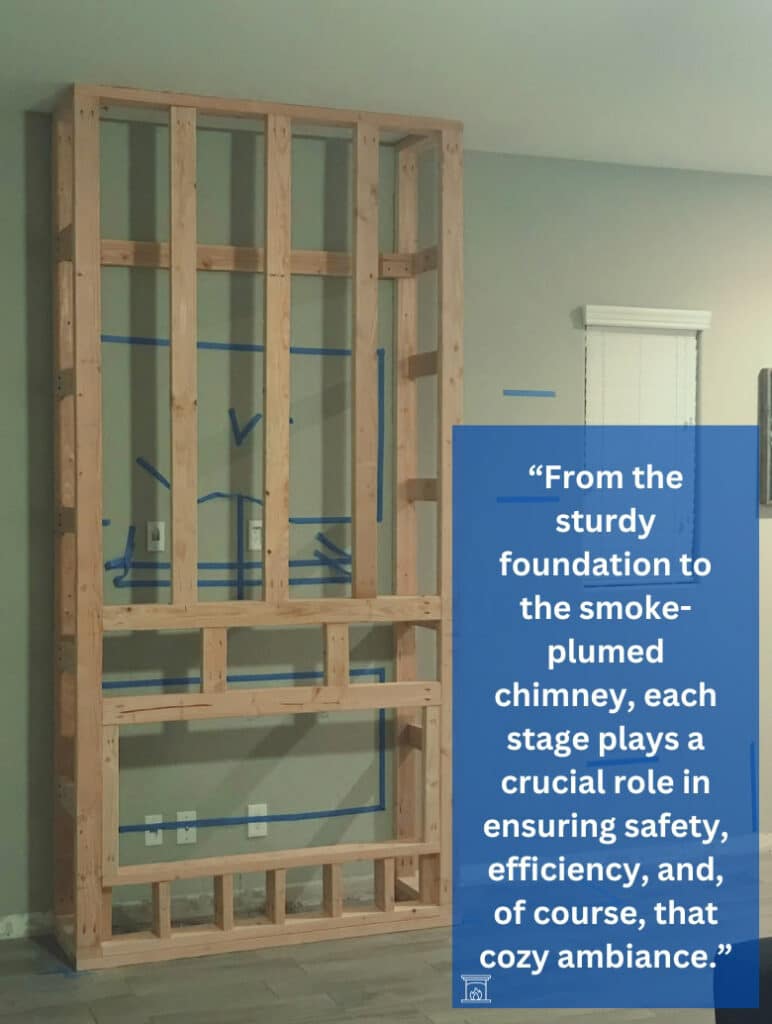
If you’ve ever considered installing a fireplace or simply crave a deeper understanding of these fascinating fixtures, then this is for you! This guide reveals the four key steps to fireplace construction.
How Fireplaces Are Built?
The installation process for a fireplace involves several steps, such as planning and design, foundation and framing, installation of different chimney parts such as the firebox and flue system, and finishing materials to make it both functional and aesthetically pleasing.
However, the specific techniques and materials used may differ based on factors such as the type of fireplace, desired aesthetic, and structural requirements.
——
Do You Need to Hire Chimney & Fireplace Expert?
Get free quotes from qualified experts near you. No commitment required!
——
Pre-Construction Considerations
Before the sparks fly, there’s crucial groundwork to lay. Here’s what you need to know.
1. Type Of Fireplace
There are two main types of fireplaces to consider: masonry fireplaces and prefabricated fireplaces.
Masonry Fireplace
A masonry fireplace is built on-site using materials such as bricks, stone, or concrete blocks. It is known for its durability and timeless appeal and offers excellent heat retention. Masonry fireplaces can also be customized to suit various architectural styles and design preferences.
Prefabricated Fireplace
On the other hand, prefabricated fireplaces (also known as zero-clearance fireplaces) are pre-engineered units that are assembled and installed in a home. They are constructed using lightweight materials such as metal, steel, or insulated panels.
Also, they offer greater flexibility in terms of installation options and are often more cost-effective than masonry fireplaces.
2. Design and Planning
Design and planning lay the foundation for a successful fireplace installation. Proper design ensures that the fireplace seamlessly integrates into your home’s layout, while planning allows you to address important factors. Some of these factors include:
- Proper Dimensions: This ensures optimal heat distribution, smoke control, and safety. Consider the room size, desired heat output, and local building codes.
- Chimney Design: The chimney’s height, width, and liner material are crucial for proper ventilation and draft. Consult a professional for guidance.
- Firebox and Hearth Design: Shape, size, and material impact heat efficiency and aesthetics. Consider your desired style and functionality.
- Legal and Safety Regulations: Ensure that you’re in accordance with the legal and safety regulations, like obtaining necessary residential permits and approvals before embarking on the project.
3. Material Selection
Below is a list of the most common materials for building a fireplace.
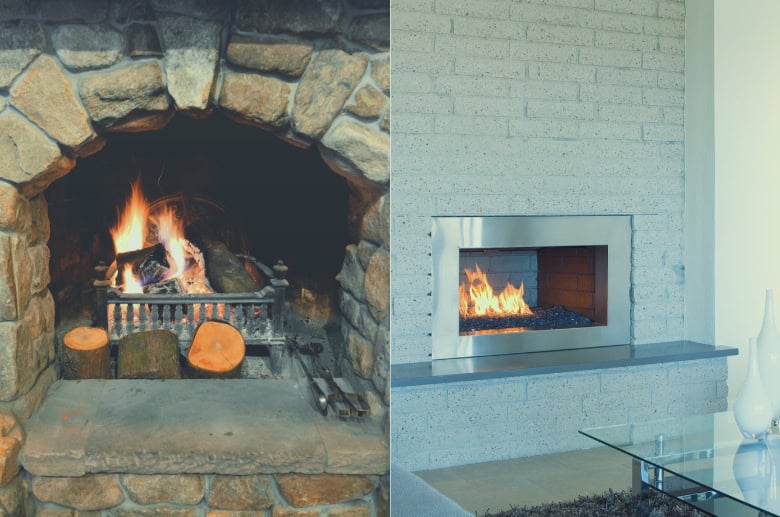
Brick
Brick is renowned for its enduring quality, ability to retain heat, and timeless appeal. It’s commonly employed in constructing the firebox, chimney, and masonry fireplace surrounds.
Brick is also used to create decorative patterns or accents on the fireplace surround and hearth. It comes in various colors and textures, allowing for customizable designs to suit different architectural styles.
Pros
- It’s a timeless and classic choice for fireplace construction.
- Provides exceptional durability.
- Offers maximum heat retention.
- It is readily available in various colors and textures.
Cons
- It’s more labor-intensive to install compared to other materials.
- Craft skills are required to achieve precise alignment and mortar joints.
- They have limitations in terms of design flexibility compared to other materials.
Stone
Like brick, stone exudes natural beauty and character, offering exceptional durability, heat resistance, and longevity. The common types of stone used include limestone, granite, slate, and marble, each providing unique colors, textures, and patterns.
Pros
- Various stones offer a unique, beautiful design.
- It offers exceptional durability, making it well-suited for both indoor and outdoor fireplaces.
- They are easily accessible.
Cons
- The premium varieties, such as marble or granite, are slightly more expensive.
- The weight of the stone may require additional structural support during installation, increasing construction costs and complexity.
- Stone may require periodic sealing and maintenance to prevent staining or weathering over time.
Metal
Metal is commonly used in the construction of prefabricated or zero-clearance fireplaces. Metal components such as steel or cast iron are used for the firebox, chimney flue, and other structural elements in masonry fireplaces.
Moreover, metal offers versatility, efficiency, and contemporary design options for fireplace construction.
Pros
- Metal offers versatility, efficiency, and contemporary design options.
- It conducts heat efficiently, providing consistent warmth.
- Metal fireplaces often feature sleek and modern designs that complement contemporary interior styles.
Cons
- It may lack the traditional charm and aesthetic appeal of brick or stone fireplaces.
- Metal surfaces may show signs of wear or discoloration over time due to exposure to high temperatures and combustion byproducts.
- Proper maintenance, such as regular cleaning and inspection of metal components, is essential to ensure optimal performance and longevity.
The Construction Process
Now, we reach the heart of the matter – the actual construction process! Remember, consulting professionals and adhering to regulations are crucial for safety and success.
1. Foundation and Structure
The foundation and structure are the unsung heroes of your fireplace – the strong bones holding everything together. Here’s a breakdown of this crucial step:
- Excavation: Dig a trench according to local building codes (typically 12–18 inches deep, extending past the fireplace footprint by 6–12 inches) to ensure stability and proper drainage.
- Gravel Base: Fill the trench with compacted gravel (4–6 inches) for drainage and support.
- Footing: Pour a concrete footing (thickness based on local codes and fireplace size) wider than the structure for even weight distribution.
Proper drainage and ventilation must also be considered to prevent moisture buildup and ensure optimal airflow.
Once the foundation is in place, attention turns to building the structure of the fireplace, starting with the firebox. Here’s how to approach its construction:
- Build the firebox walls with chosen material (brick, stone, prefabricated panels) following the manufacturer’s instructions or masonry best practices.
- Ensure proper fireproofing with refractory materials if using combustible materials near the opening.
- Maintain recommended firebox dimensions (consult local codes and professional guidance) for optimal heat and draft.
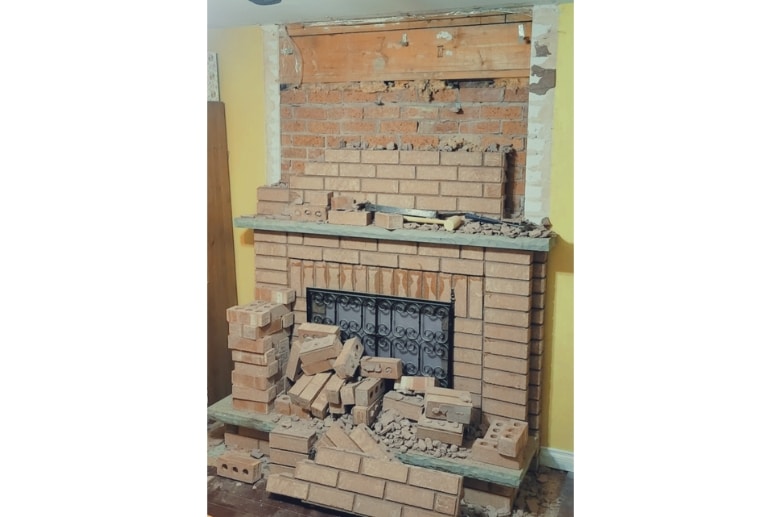
Next up is the chimney. Construct it using the chosen material, ensuring it rises above the roofline as per local codes (typically 3-4 feet).
This is where the 3-2-10 chimney rule comes in, which mandates that chimneys extend at least 3 feet above the roof, 2 feet above any part of the building within 10 feet horizontally, and remain at least 10 feet away from adjacent structures to ensure proper ventilation and safety.
Next, install a flue liner (made of clay, metal, or other approved materials) inside the chimney for proper venting and safety. Lastly, cap the chimney with a weatherproof cover to prevent water and debris entry.
——
Do You Need to Hire Chimney & Fireplace Expert?
Get free quotes from qualified experts near you. No commitment required!
——
2. Firebrick and Refractory Panels
Firebrick and refractory panels are made from ceramic materials such as clay or alumina. They are designed to withstand high temperatures exceeding 2,000°F, providing heat-resistant linings for the firebox and ensuring safe and efficient combustion.
The installation of panels involves the following steps:
- Preparation: Before installing the firebrick and refractory panels, ensure the surface of the firebox is clean, dry, and free of debris.
- Cutting and Fitting: Cut the firebrick and refractory panels using a saw or specialized cutting tool. Ensure the measurements are accurate and that they fit properly within the firebox.
- Installation: Each brick is laid in place, with mortar applied between the joints to create a tight seal. Refractory panels are secured to the walls and floor of the firebox using metal brackets or adhesive, ensuring a snug and secure fit.
3. Mortar and Insulation
Mortar is the adhesive that holds masonry materials such as firebrick and stone together. It provides structural support, seals gaps between bricks or panels, and enhances the fireplace’s overall stability and integrity.
Insulation is equally essential in retaining heat within the firebox while preventing structural damage to surrounding materials. Common insulation materials include vermiculite, perlite, and ceramic fiber blankets.
The application process involves careful preparation, mixing, and placement. It’s then followed by proper tooling and curing for mortar and cutting, securing, and finishing for insulation.
4. Installing the Flue and Ventilation System
To ensure safe and efficient operation, it’s crucial to install a flue and ventilation system that can properly vent smoke and provide adequate air supply. This requires the flue to be appropriately sized and positioned to create a proper draft, which in turn will draw smoke and combustion byproducts out of your home.
Similarly, an adequate air supply is essential to support combustion and prevent back-drafting or smoke spillage into the living space.
Remember, prioritizing safety and professional expertise is crucial when it comes to how fireplaces are built. Investing in qualified professionals ensures the enjoyment of your fireplace without compromising the well-being of yourself and your loved ones.
Finishing Touches and Maintenance
Now that the technical aspects are in place, it’s time to personalize your masterpiece! Let’s explore the finishing touches that transform your fireplace into a focal point that reflects your unique style.
Mantel and Surrounds Installation
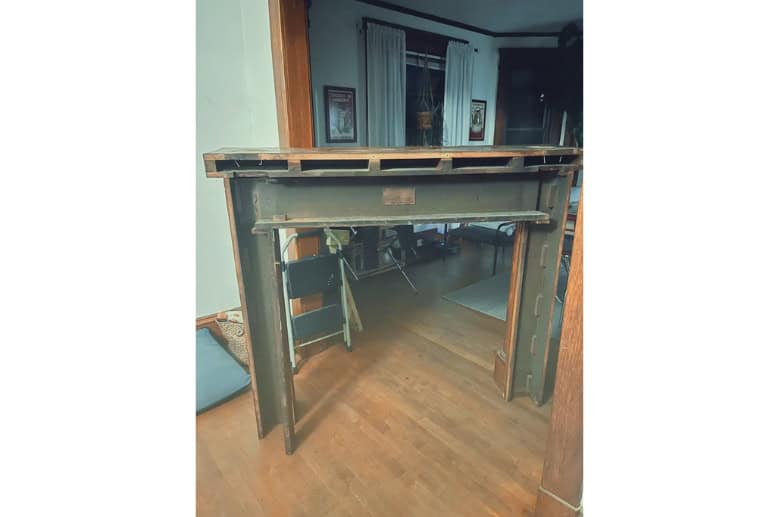
Consider your room’s style and the materials used for the fireplace itself. Wood, stone, tile, or metal – the options are endless! Ensure the mantel’s size and placement don’t obstruct airflow or interfere with the damper operation.
For complex installations or heavier materials, consider engaging a qualified professional for secure and proper positioning.
Fireplace Maintenance and Safety Tips
Routine maintenance is essential for keeping the fireplace safe and functional throughout its lifespan. Some maintenance tasks include:
- Regular Cleaning: Remove ashes after each use to prevent buildup and potential fire hazards. Clean the glass doors (if applicable) with appropriate products.
- Annual Inspection: Schedule an annual professional chimney sweep inspection to identify and address any issues like creosote buildup or blockages.
- Fuel Wisely: Only burn seasoned firewood and avoid using accelerants, which can create dangerous flames.
- Spark Control: Use a fire screen to prevent embers from escaping and potentially igniting nearby objects.
- Carbon Monoxide Awareness: Install carbon monoxide detectors near your fireplace and in other parts of your home, and test them regularly.
Conclusion
Overall, a well-built fireplace is an investment in your home’s comfort, value, and memories. By considering these crucial elements and consulting qualified professionals throughout the process, you can create a fireplace that warms your heart and becomes a cherished centerpiece of your house for years to come.
So, build wisely, maintain diligently, and gather around the hearth, enjoying the magic of a fire that’s built to last.
FAQs
How long does it take to build a fireplace?
Building a traditional masonry fireplace can take several days to a few weeks, while prefabricated fireplaces may have a shorter timeline (usually a day).
However, this period will vary depending on factors such as the type of fireplace, design complexity, and availability of materials and labor. Consulting with professionals is key to getting an accurate estimate based on project specifics.
What are the most energy-efficient materials for fireplace construction?
Brick is the most energy-efficient material for fireplace construction. Its dense and thermal mass properties allow it to absorb and retain heat efficiently, reducing the need for additional heating sources.
Additionally, brick fireplaces provide excellent insulation, preventing heat loss and directing more warmth into the room.
How do I choose the right location for a fireplace in my home?
Consider safety, functionality, and aesthetics. Ensure proper clearance from walls and flammables, adequate ventilation, and chimney placement that meets code requirements. Involve professionals for guidance and compliance.


